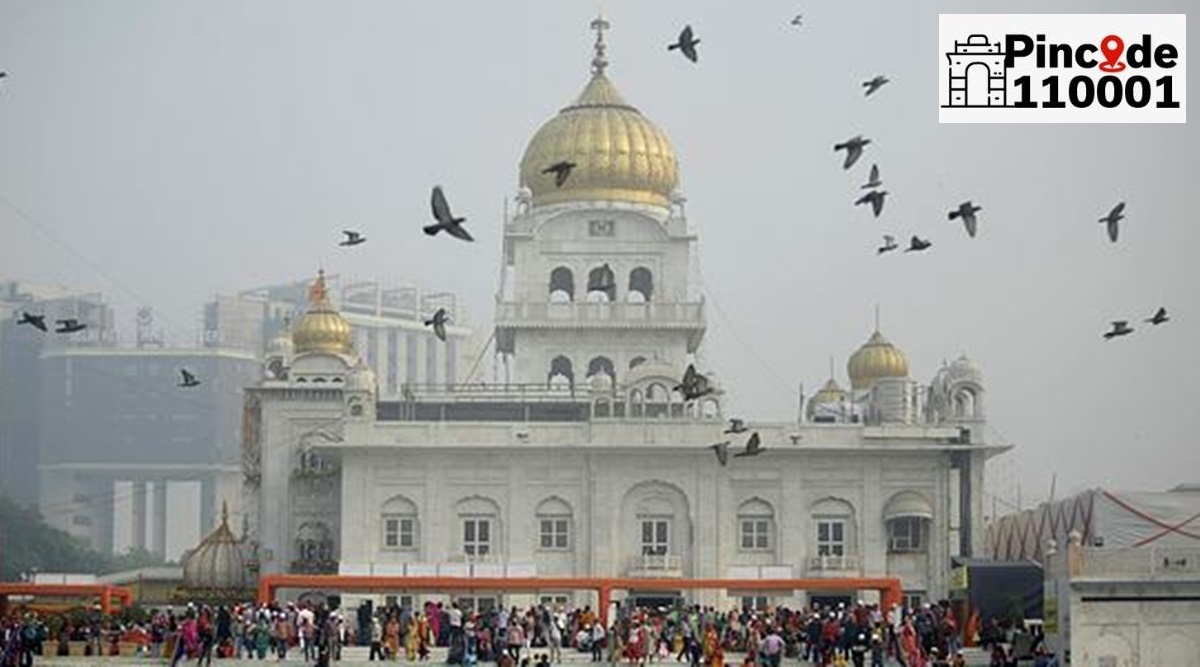 Built in the 17th century, the marble shrine with its golden dome, topped with the iconic flagpole known as Nishan Sahib, was first owned by a Hindu Rajput ruler Raja Jai Singh. It was then known as Jaisinghpura Palace. (Express photo by Praveen Khanna)
Built in the 17th century, the marble shrine with its golden dome, topped with the iconic flagpole known as Nishan Sahib, was first owned by a Hindu Rajput ruler Raja Jai Singh. It was then known as Jaisinghpura Palace. (Express photo by Praveen Khanna)As Sikhs across the globe celebrated Gurpurab Tuesday marking the birthday of their founder guru Guru Nanak Dev, Gurudwara Bangla Sahib located in Delhi’s busy Connaught Place continues to be one of the most famous Sikh sacred spots in India.
Built in the 17th century, the marble shrine with its golden dome, topped with the iconic flagpole known as Nishan Sahib, was first owned by a Hindu Rajput ruler Raja Jai Singh. It was then known as Jaisinghpura Palace.
In 1664, the palace had a young but esteemed visitor – the eighth Sikh Guru, Har Krishan – at a time when there were smallpox and cholera outbreaks in Delhi, “He was only a boy then and was also known as Bal Guru (child guru),” said conservation architect Gurmeet Rai, “Bal Guru had a huge following given the piety of the first five gurus and the Mughal resistance by the Sixth Guru,” Rai said.
The ‘Bal Guru’ treated people with cholera and smallpox in the ‘Seva’ tradition using the pond water inside. But during the course of his service, the boy himself contracted the disease and died. Raja Jai Singh, as a mark of respect to the eighth Sikh Guru, dedicated the complex to him and named it Gurudwara Bangla Sahib (‘Bangla’ is Punjabi for ‘bungalow’). The palace soon went on to become a prominent spiritual place of the Sikhs.
The water in the holy pond known as ‘Sarovar’ inside the complex is believed to have the healing properties of Bal Guru, said Kiranjot Kaur, a senior member of the Shiromani Gurdwara Parbandhak Committee and its former general secretary. “Devotees who throng the place do not forget to collect the water and take it back to their homes,” said Kaur.
“It was originally a well and Raja Jai Singh built a tank over it,” said Kaur. “When we were kids, the ‘Sarovar’ was much smaller. But over the past 2-3 decades, it has been expanded. The shrine is now a magnificent structure.”
Over the years, the structure situated at the intersection of Ashok Road and Baba Kharag Singh Marg underwent a number of renovations.
“The ‘Sarovar’ is a social leveller, because everyone has access to it,” said Rai.
“The idea is that, to access it, everyone has to descend to the same place regardless of caste or gender. You immerse yourself into the water, and you immerse yourself into the teachings of the Guru. The story goes that it was Guru Nanak, the founder of the faith, who went into a river in Sultanpur in 1469 and emerged after three days. And when he did, he said, ‘Na koi Hindu, na koi Musalman. Ek hi noor se’ (which could be loosely translated as ‘neither is someone Hindu, nor is someone Muslim; everyone is of the same light’).”